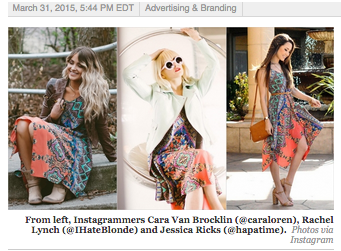Look around your office: Is your colleague scouring a cool, new website? Is someone on a smartphone checking out Instagram or Snapchat? In the average workday, how often do you find yourself in a rabbit hole on your computer or phone, reading messaging from a brand or someone in your social circle enticing you to make a purchase?
Consumer brands trying to cut through this noise face a significant challenge. Historically, marketing agencies recommended a siloed approach: advertise in publications that match your target audience and/or engage in a focused PR campaign with that same media.
Of course, this approach doesn’t cut it anymore.
We live in an omni-channel world where consumers not only go into stores, but they research online and survey social networks to gather even more information about products they might purchase. Moreover, they’re doing this research on desktops, mobile devices, and tablets 24/7/365—as well as leaning on their real-world social networks — to gather trend information. Every one of these touch points eventually informs their purchase decision.
This means two things: First, brands must develop marketing programs that can be supported through all touch points and that include link building services—there is no longer a hierarchy in determining where brands should share their message. That being said, utilizing the power of social networks and influencers should be approached with the same depth of strategy as traditional publications.
You can’t fight the power of social networks. Instagram and Twitter personalities are beginning to hold the same prestige as established print publications, and their ability to yield measureable results is staggering. See this engagement Lord & Taylor just brought to life on Instagram. I’m not arguing that a product pick-up in GQ is no longer valuable, but the sweet spot, now, is pick-up in GQ while simultaneously engaging in a digital advertising campaign and seeding that same product to a vetted list of bloggers and Instagram influencers.
Of course, remaining true to your brand and product is key throughout all of this. It’s ill-advised to pitch and send a new mountaineering boot from La Sportiva to a bunch of fitness bloggers simply because “They are active, too.” Finding the group of social influencers that speaks to your target audience can be tricky, but it’s essential to the success of a campaign.
There will always be room for traditional PR and advertising tactics, but as we look forward in the world of marketing we can no longer ignore just how interconnected our world has become. For brands and marketing agencies alike, acknowledging this and working towards a shift in approach to marketing campaigns will be crucial as we all learn to navigate this rapidly-changing landscape.
— Alison Nestel-Patt



